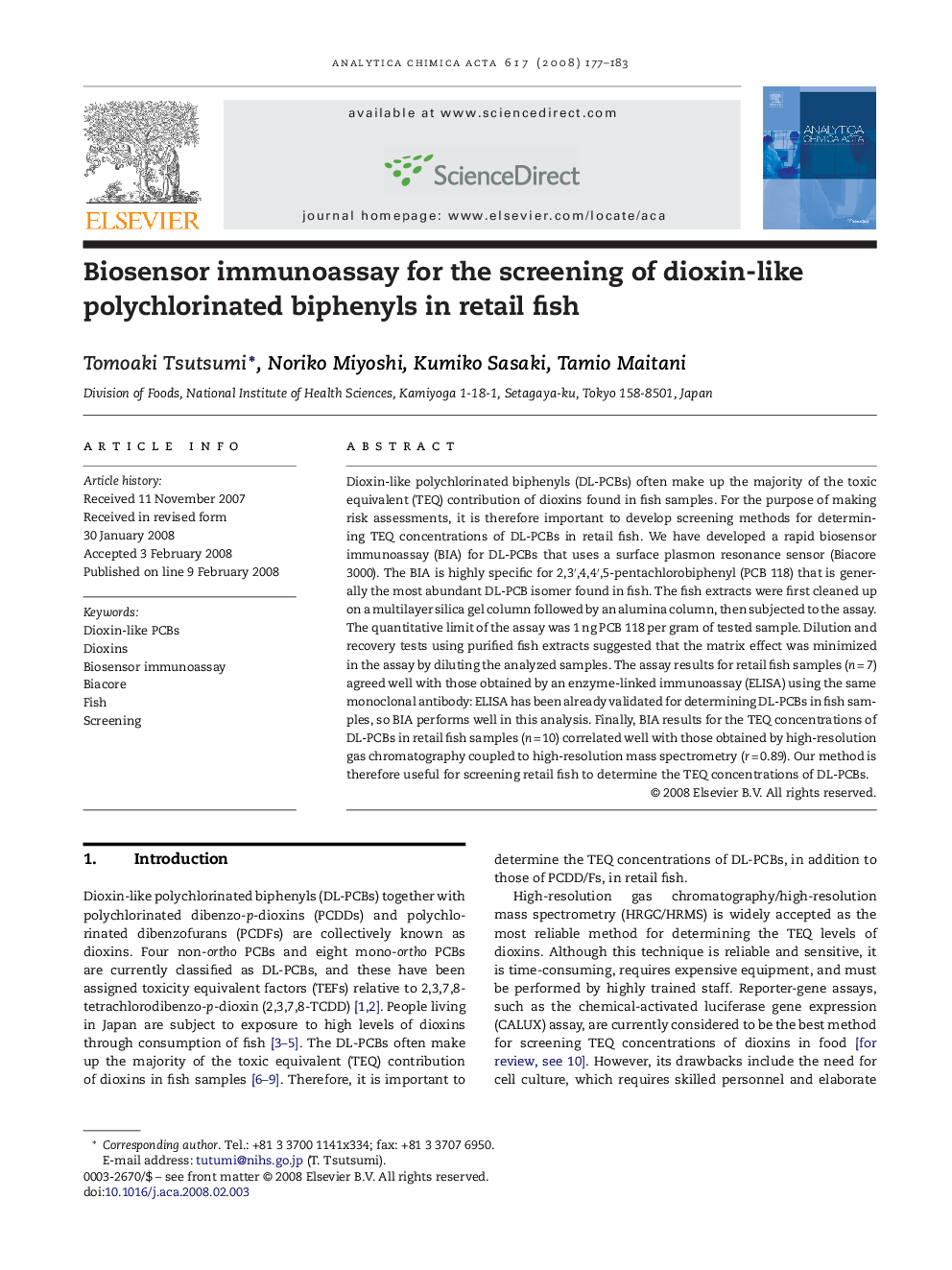| Article ID | Journal | Published Year | Pages | File Type |
|---|---|---|---|---|
| 1169453 | Analytica Chimica Acta | 2008 | 7 Pages |
Dioxin-like polychlorinated biphenyls (DL-PCBs) often make up the majority of the toxic equivalent (TEQ) contribution of dioxins found in fish samples. For the purpose of making risk assessments, it is therefore important to develop screening methods for determining TEQ concentrations of DL-PCBs in retail fish. We have developed a rapid biosensor immunoassay (BIA) for DL-PCBs that uses a surface plasmon resonance sensor (Biacore 3000). The BIA is highly specific for 2,3′,4,4′,5-pentachlorobiphenyl (PCB 118) that is generally the most abundant DL-PCB isomer found in fish. The fish extracts were first cleaned up on a multilayer silica gel column followed by an alumina column, then subjected to the assay. The quantitative limit of the assay was 1 ng PCB 118 per gram of tested sample. Dilution and recovery tests using purified fish extracts suggested that the matrix effect was minimized in the assay by diluting the analyzed samples. The assay results for retail fish samples (n = 7) agreed well with those obtained by an enzyme-linked immunoassay (ELISA) using the same monoclonal antibody: ELISA has been already validated for determining DL-PCBs in fish samples, so BIA performs well in this analysis. Finally, BIA results for the TEQ concentrations of DL-PCBs in retail fish samples (n = 10) correlated well with those obtained by high-resolution gas chromatography coupled to high-resolution mass spectrometry (r = 0.89). Our method is therefore useful for screening retail fish to determine the TEQ concentrations of DL-PCBs.
